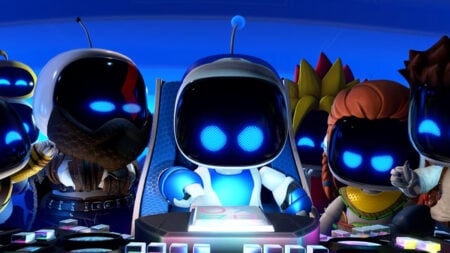Title: Bloodstained: Ritual of the Night
Developer: Artplay
Publisher: 505 Games
Genre: Platforming Adventure
Available On: PS4,
Official Site: https://playbloodstained.com/
Release Date: Jun 18, 2019
Where to Buy it: Xbox Marketplace, PlayStation Store, Steam, Nintendo Switch eShop
One of life’s greatest passions is to create something worthwhile, something unrestrained, outside of the boundaries set by management or technology. Bloodstained: Ritual of the Night is a game born from that passion, from the desire to create a video game that not only the producer wanted, but that the fans also demanded. While Bloodstained itself is an interesting piece of media to take a look at, it wouldn’t do the game justice to leave out the context of its conception.
Koji Igarashi, the lead producer for 1997’s legendary video game Castlevania: Symphony of the Night, was denied permission to work on large-scale sequels to said game. Instead, Konami gave him a small team and an even smaller budget, and he used those to make Castlevania sequels on portable systems like the Game Boy Advance and Nintendo DS. Konami eventually grew tired of releasing these games and moved Igarashi to the mobile division, where he felt his talents were wasted. After leaving Konami in 2014, he founded his own studio, named ArtPlay. Inspired by Keiji Inafune’s record-breaking Kickstarter campaign for Mighty Number 9, Igarashi started his own campaign to make a large-scale, big-budget spiritual sequel to Symphony of the Night. Igarashi’s campaign asked for $500,000 which was met nearly instantly, with the campaign breaking Inafune’s record, earning $5.5 million from nearly 65,000 backers, and becoming the highest-funded video game on Kickstarter, until Shenmue 3 beat that record a short time later. Bloodstained: Ritual of the Night was given the green light, and Igarashi got the opportunity to make the game of his dreams.

While the Kickstarter campaign and the legacy of the producer may seem like irrelevant information to most people, the truth is that Bloodstained was fighting an uphill battle. Being funded mere months apart from the disaster that was Mighty Number 9 (which was also funded by a producer scorned from his original company), the idea that such a game could turn out to be a quality product was seeming to be impossible. Thankfully, Bloodstained is a phenomenal title, drawing inspiration from not just Symphony of the Night, but also nearly two decades of advancements in the genre.
Bloodstained: Ritual of the Night is a member of the “Metroidvania” genre- a name given to games that give you a large map to explore with numerous dead-ends, which can then be circumvented by collecting upgrades that augment your abilities; an example being the Morph Ball in Super Metroid which lets you fit into narrow passageways. Castlevania: Symphony of the Night introduced a new wrinkle to the genre by way of adding RPG elements such as leveling up your statistics and giving you lots of equipment to make you stronger, as well as changing the way you play. While Symphony gives you only five different weapon types which were relatively similar, Bloodstained offers nine distinct types of melee weapons, as well as a ranged firearm-type weapon. Each weapon has its own strengths and weaknesses; for instance, sharp weapons like daggers will do less damage to armored enemies, while blunt weapons like maces will do extra damage to the same enemy. Other weapons might deal bonus elemental damage as well, giving you even more options to help take out the toughest enemies.

As you upgrade the main character Miriam through the course of the game, your options for combat and movement grow. Reading books in the game will teach you special abilities for certain weapons, and using those abilities until they’re mastered will allow you to use that ability with any weapon of the same class. Defeating enemies gives you a chance to absorb their “shard”, which will give you combat magic that you can cast to augment your abilities. Some shards, however, are more important and will give you movement abilities, like a double jump, a high-speed dash, or the ability to swim underwater. One strange quirk of Bloodstained’s genre is that the beginning of the game is actually more difficult than the ending; in the early parts of the game you have fewer options, but by the end of the game you’ve got tons of choices for your combat load-outs. It’s outrageously fun to see the evolution from being weak and always in danger of being overpowered and killing most enemies in a single hit. Some people won’t like that kind of gameplay and prefer the difficulty curve to be more consistent overall. At the time of writing, there are three difficulty options to choose from as well, so there’s definitely a game here for everyone.
At the root of Bloodstained, though, is its enemy designs. Everything from the lowly, basic skeleton enemy to the game’s final boss are all lovingly rendered in full 3D, with loads of detail and character. The variety of different enemies in the game is quite astonishing, with creatures ranging from dogs and fish all the way to creatively designed demons and monsters. There are a few enemies that are unfortunately out of place as well, like the giant puppy enemies, which are based on certain Kickstarter backers’ pets. Those enemies are few and far between, however, with most of the creature designs fitting perfectly into Igarashi’s gothic world design. In fact, Bloodstained actually went through a last-minute art overhaul to improve the overall aesthetic- including a new lighting engine used to great effect- which goes to show the lengths that Igarashi and his crew went to making this game the best it could be. Candelabras and braziers add subtle lighting to the castle interiors, while moonlight beams in through windows and long hallways casting gorgeous shadows. The game makes fantastic use of particles to show off the intense effects of special moves, spells, and abilities; and everything about the visuals meshes so well to convey a strong and consistent aesthetic throughout the game.

But to speak solely of the visuals in this game would be a disservice. The composer for Symphony of the Night, Michiru Yamane, returns to give Bloodstained a fantastic soundtrack. Each zone has its own atmospheric and moody theme, matching with the classical gothic aesthetic. Yamane’s work on this game fits so perfectly with the graphical aesthetic that one would simply not be complete without the other. From light and sparkly music in icy caverns to violin-laden rock music in the more intense parts of the castle to eastern-influenced tunes in certain late-game areas; Bloodstained’s soundtrack sticks out as one of the strongest parts of the game as a whole.
While the game’s aesthetic and design is phenomenal, that’s not to say that Bloodstained is a perfect product. There are some minor graphical glitches that crop up occasionally, as well as some other minor bugs such as dropped items getting stuck in terrain; but nothing game-breaking so far. The worst thing I’ve had happen to me in my 20-hour playthrough of the game was a single crash, though there are occasions where the frame rate of the game will drop for no reason, with the only fix being to restart the game from my latest save. There is one late-game boss, however, that has such an intense graphical effect that every single version of the game will struggle and slow to a crawl. These technical issues are nothing compared to the mess that is the Nintendo Switch version, which is plagued by low frame rates, high input delay, and lots of bugs not present in other versions. While the developers are putting the Switch version on high priority for fixes, at the time of this review it is the worst place to play Bloodstained. Before purchasing the Switch version, it would be worth the time to do research and check to see that those issues were corrected.
Verdict: Bloodstained: Ritual of the Night had to overcome a lot of challenges to become the game it is today. While its development might have been rocky and a bit longer than originally planned, it’s earned its place as the rightful successor to Igarashi’s previous games; and while there are a few technical issues, the game stands on its own to be a phenomenal product with tons of options and replayability. Bloodstained appears well-poised to be yet another classic title that will be remembered decades from now, just like Symphony of the Night before it.
[review]






